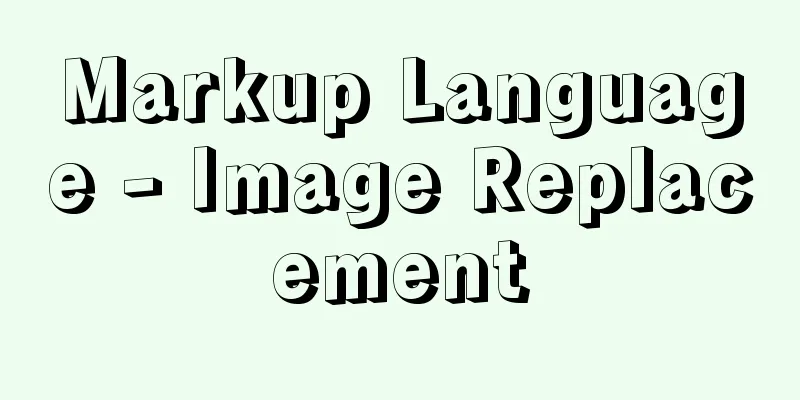Best Practices for Developing Amap Applications with Vue

PrefaceWe have developed many product systems related to map interaction before. Currently, there are only a few mainstream map application SDKs in China: AutoNavi, Baidu and Tencent. Therefore, I personally feel that Amap's development is relatively better for PC applications, at least there are no obvious pitfalls in the experience. This article is a summary of the development of map applications. Asynchronous loadingBecause the js sdk application is used, the script file itself is very large, so we need to pay attention to the white screen time of loading and solve the user experience problem. At present, most product applications are SPA single-page application systems, so I encapsulate an asynchronous loading method:
const loadScripts = async scripts => {
const get = src => {
return new Promise(function(resolve, reject) {
const el = document.createElement('script')
el.addEventListener('load', function() {
resolve(src)
}, false)
el.addEventListener('error', function() {
reject(src)
}, false)
el.id = src.id
el.src = src.url
document.getElementsByTagName('body')[0].appendChild(el) || document.getElementsByTagName('head')[0].appendChild(el)
})
}
const myPromises = scripts.map(async script => {
if (document.getElementById(script.id) === null) {
return await get(script)
}
})
return await Promise.all(myPromises)
}
export default loadScripts
When loading a script, this method first determines whether the script exists on the page. If it does, it will not be loaded a second time, and then the loading completion callback will be used to execute related methods. Package componentsIf there are multiple pages in the system that require map application services, you need to encapsulate a general map component to improve the maintainability of the project. I will simply encapsulate the map application here:
<template>
<div
:style="{
width: width,
height: height
}"
class="amap-container"
>
<div ref="amap" class="amap">
<slot />
</div>
</div>
</template>
<style lang="scss" scoped>
.amap-container {
.amap {
width: 100%;
height: 100%;
}
}
</style>
Specify a map application container, wrap it with a layer of specified height and width, and pass the height and width as external variables. The business logic is as follows:
import loadScripts from '@/loadScripts'
export default {
name: 'AMapContainer',
props: {
width: {
require: false,
type: String,
default: '100%'
},
height:
require: false,
type: String,
default: '600px'
},
options:
require: false,
type: Object,
default: () => {}
}
},
data: () => ({
amap: null,
amapInfo:
key: 'xxxxxxxxxxxxxxx'
}
}),
created() {
this.initAMap()
},
beforeDestroy() {
// Destroy the map if (!this.amap) {
return
}
this.amap.destroy()
this.amap = null
},
methods: {
initAMap() {
loadScripts([{
id: 'ampa',
url: `https://webapi.amap.com/maps?v=2.0&key=${this.amapInfo.key}&plugin=AMap.PolygonEditor`
}]).then(() => {
this.amap = new window.AMap.Map(this.$refs['amap'], this.options)
this.$emit('map', this.amap, window.AMap)
})
}
}
}
Initialize the map container when the application is loaded: asynchronously load the Amap js sdk, then instantiate the map application in the callback method, and pass the instantiated map object into the $emit event to facilitate the needs of the parent component. Also note that the map application must be destroyed during the destruction lifecycle, otherwise it will take up a lot of system memory. Using ComponentsAfter encapsulating the component, you can introduce it on the corresponding page and use it:
<template>
<amap-container height="100%" :options="amapOptions" @map="getAMapData" />
</template>
<script>
import AMap from '@/components/AMap'
export default {
name: 'AMapDemo',
components:
'amap-container': AMap
},
data: () => ({
amapOptions: {
zoom: 14,
resizeEnable: true,
viewMode: '3D',
mapStyle: 'amap://styles/normal'
},
AMap: null, // map object amap: null // current map instance }),
methods: {
/**
* Map loading completed callback* @param amap
* @param AMap
*/
getAMapData(amap, AMap) {
// Get the map amap object from the component this.amap = amap
// Get the map AMap static object from the component this.AMap = AMap
}
}
}
</script>
Then develop related businesses based on the above. For map applications, the most core data is the coordinates in the map application. Whether it is a map marking element, a polyline element (track, etc.), a drawing element, etc., you only need to obtain the corresponding longitude and latitude data and store it in the database. As for how to obtain it, I will not go into details here. Best Practices for Customizing InterfacesIn the map application I made before, in the detailed interface of the marker (select a marker and left-click to open the interface), this interface requires the native document object to be passed in, but this writing method does not conform to the Vue object, so many systems used to spend a lot of time to write the DOM structure, which is really a headache. In order to solve this problem later, does Vue have a related method to mount the component to obtain the real document object? After consulting the relevant documents, there is indeed this API: Vue.extend. Using this API to mount the component object, you can get the object of the instantiated component.
import ContextCard from './components/ContextCard'
// Create a marker const marker = new this.AMap.Marker({
map: this.amap,
position: [119.058904, 33.537069]
})
// Bind click event marker.on('click', this.markerInfoWindow)
// Click to open the pop-up window const markerInfoWindow = () => {
//Introduce Vue component constructor instantiation const ContextCardContent = Vue.extend(ContextCard)
// Mount component const contextCardContent = new ContextCardContent().$mount()
// Instantiate the window object this.amapInfoWindow = new this.AMap.InfoWindow({
isCustom: true,
content: contextCardContent.$el,
offset: new this.AMap.Pixel(0, -40)
})
// Open the window this.amapInfoWindow.open(this.amap, marker.getPosition())
// Listen for component events to close the window contextCardContent.$on('closeWindow', () => this.amapInfoWindow.close())
}
ContextCard.vue component:
<template>
<el-card class="context-box-card box-card">
<div slot="header" class="header">
<span>Card Name</span>
<el-button type="text" class="close-btn" @click="closeWindow">Close</el-button>
</div>
<div v-for="o in 4" :key="o" class="text item">
{{ 'list content' + o }}
</div>
</el-card>
</template>
<script>
export default {
name: 'AMapContextCard',
methods: {
closeWindow() {
this.$emit('closeWindow')
}
}
}
</script>
<style lang="scss" scoped>
.context-box-card {
width: 320px;
height: 200px;
.header {
display: flex;
justify-content: space-between;
align-items: center;
}
::v-deep .el-card__header {
padding: 5px 20px;
}
}
</style>
The above is a punctuation mark that opens the detailed information of the pop-up window, using the Vue.extend constructor to instantiate the component. This greatly improves the robustness of the project.
import Vue from "vue";
import App from "./App.vue";
import Element from "element-ui";
import "normalize.css/normalize.css";
import "element-ui/lib/theme-chalk/index.css";
Vue.config.productionTip = false;
Vue.use(Element);
new Vue({
render: (h) => h(App)
}).$mount("#app");
SummarizeThis is the end of this article about developing Amap application with Vue. For more relevant Vue Amap application content, please search previous articles on 123WORDPRESS.COM or continue to browse the following related articles. I hope everyone will support 123WORDPRESS.COM in the future! You may also be interested in:
|
<<: CentOS 8 custom directory installation nginx (tutorial details)
>>: Detailed Example of Row-Level Locking in MySQL
Recommend
Comprehensive summary of mysql functions
Table of contents 1. Commonly used string functio...
How to view files in Docker image
How to view files in a docker image 1. If it is a...
Analysis of the usage of Xmeter API interface testing tool
XMeter API provides a one-stop online interface t...
How to manually upgrade the kernel in deepin linux
deepin and Ubuntu are both distributions based on...
Detailed explanation of the code for implementing six sieve styles using HTML grid layout
First, attach the code below the effect diagram &...
Detailed steps to store emoji expressions in MySQL
Caused by: java.sql.SQLException: Incorrect strin...
Causes and solutions for front-end exception 502 bad gateway
Table of contents 502 bad gateway error formation...
The role of nextTick in Vue and several simple usage scenarios
Purpose Understand the role of nextTick and sever...
Summary of javascript date tools
let Utils = { /** * Is it the year of death? * @r...
MySQL slave library Seconds_Behind_Master delay summary
Table of contents MySQL slave library Seconds_Beh...
React native realizes the monitoring gesture up and down pull effect
React native implements the monitoring gesture to...
Jenkins packaging microservices to build Docker images and run them
Table of contents Environment Preparation start 1...
MySQL time type selection
Table of contents DATETIME TIMESTAMP How to choos...
WeChat applet realizes simple tab switching effect
This article shares the specific code for WeChat ...
Detailed explanation of Truncate usage in MYSQL
This article guide: There are two ways to delete ...









